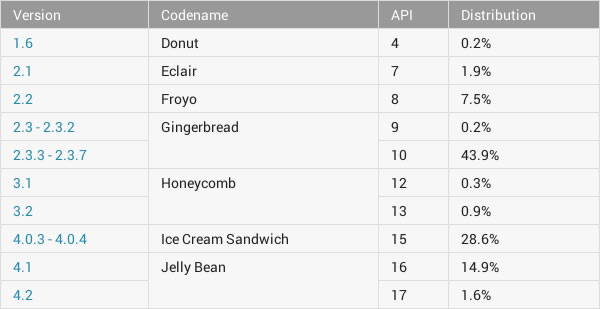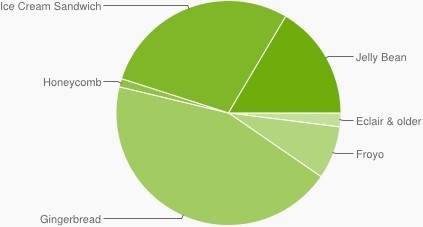It may have taken nearly a year and a half but Android 4.x (all versions of Ice Cream Sandwich and Jelly Bean) has finally overtaken Gingerbread as the most widely used version of Google's mobile operating system according to the latest platform data from the search giant.
Adoption of Android 4.x is up 2.5 percent from last month, collectively accounting for 45.1 percent of all installations in the wild. Google’s Gingerbread, however, still runs on 45.4 percent of all devices that visited Google Play within a 14-day period ending on March 4.

Logic tells us that end users would naturally want to migrate to the latest version of Android, currently version 4.2 Jelly Bean but regretfully it’s not always that simple. If nothing else, the numbers highlight a glaring issue facing Android: fragmentation. And it’s not so much the fault of Google as it is phone manufacturers and wireless carriers dragging their feet to bring new software to older phones, but I digress.
Of course, fragmentation is only half the story when looking at Gingerbread as another key reason it still has such a massive install base is due to the fact that it commonly ships on lower-end handsets and feature phones. Given the variety of phones that fit into this category, it becomes a bit easier to understand the disparity between Gingerbread and newer flavors of Android.

What’s more, the hardware inside the majority of budget phones simply isn’t powerful enough to run anything above what it ships with.